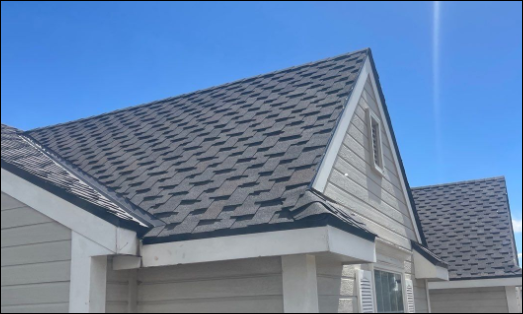Choosing the right roofing material is a critical decision for homeowners and businesses alike. The lifespan of a roof significantly influences its overall cost-effectiveness and the frequency of maintenance or replacement. At Tried and True Roofing, we understand the importance of investing in durable roofing solutions. In this comprehensive guide, we will explore the top roofing materials known for their longevity and provide insights into their benefits and drawbacks.
1. Slate Roofing: The Pinnacle of Durability
Slate roofing is often considered the gold standard in terms of longevity. Known for its natural beauty and exceptional durability, slate roofs can last over 100 years with proper maintenance. This type of Denver roofing is made from natural stone, which makes it highly resistant to weathering and fire.
Advantages of Slate Roofing:
- Longevity: Slate roofs can last a century or more, making them an excellent long-term investment.
- Aesthetic Appeal: The natural stone appearance enhances the architectural beauty of any building.
- Fire Resistance: Slate is non-combustible, providing excellent fire protection.
Disadvantages of Slate Roofing:
- Cost: The initial installation cost of slate roofing is high due to the material and specialized labor required.
- Weight: Slate is heavy and may require additional structural support to bear its weight.
2. Metal Roofing: A Modern, Long-Lasting Option
Metal roofing has gained popularity for its durability, energy efficiency, and modern aesthetic. Typically, metal roofs can last between 40 to 70 years, depending on the type of metal used. Common metals for roofing include steel, aluminum, and copper.
Advantages of Metal Roofing:
- Longevity: Metal roofs have a long lifespan, especially those made from copper, which can last over 70 years.
- Energy Efficiency: Reflective properties of metal roofing reduce cooling costs by reflecting sunlight.
- Low Maintenance: Metal roofs require minimal maintenance compared to other roofing types.
Disadvantages of Metal Roofing:
- Initial Cost: The upfront cost is higher than asphalt shingles but lower than slate or clay tiles.
- Noise: Metal roofs can be noisier during rain or hailstorms, though insulation can mitigate this issue.
3. Clay and Concrete Tiles: Timeless and Durable
Clay and concrete tiles are known for their longevity and classic look. These tiles can last between 50 to 100 years, making them a durable choice for various architectural styles.
Advantages of Clay and Concrete Tiles:
- Durability: Both clay and concrete tiles are resistant to weathering and can withstand extreme weather conditions.
- Aesthetic Variety: Available in various colors and styles to match different architectural designs.
- Fire Resistance: Both materials are non-combustible, providing excellent fire protection.
Disadvantages of Clay and Concrete Tiles:
- Weight: Similar to slate, these tiles are heavy and may require additional structural support.
- Cost: The initial installation cost is higher compared to asphalt shingles but provides long-term value.
4. Asphalt Shingles: Affordable and Versatile
Asphalt shingles are the most common roofing material in the United States due to their affordability and ease of installation. While not as long-lasting as slate or metal, high-quality asphalt shingles can last up to 30 years.
Advantages of Asphalt Shingles:
- Cost-Effective: Asphalt shingles are one of the most affordable roofing options available.
- Variety: Available in numerous styles and colors, making it easy to find a design that matches your home.
- Ease of Installation: Asphalt shingles are relatively easy to install, reducing labor costs.
Disadvantages of Asphalt Shingles:
- Shorter Lifespan: Compared to other materials, asphalt shingles have a shorter lifespan, typically around 20 to 30 years.
- Maintenance: Asphalt shingles may require more frequent maintenance and repairs.
5. Wood Shingles and Shakes: Natural Beauty with Proper Care
Wood shingles and shakes offer a natural and rustic appearance that can enhance the beauty of any home. With proper maintenance, wood roofing can last between 30 to 50 years.
Advantages of Wood Shingles and Shakes:
- Aesthetic Appeal: The natural look of wood adds character and charm to any home.
- Insulation Properties: Wood provides good insulation, helping to maintain indoor temperatures.
Disadvantages of Wood Shingles and Shakes:
- Maintenance: Wood roofing requires regular maintenance to prevent issues such as rot and insect infestation.
- Fire Risk: Wood is more susceptible to fire, though treatments are available to enhance fire resistance.
Conclusion
When selecting the best roofing material for longevity, it’s essential to consider factors such as cost, maintenance, and the specific needs of your building. At Tried and True Roofing, we pride ourselves on offering expert advice and high-quality roofing solutions to ensure the best possible outcome for your investment.
Whether you’re looking for the timeless durability of slate, the modern efficiency of metal, or the classic appeal of clay tiles, our experienced team is here to help you make an informed decision. Investing in a long-lasting roof not only enhances the value of your property but also provides peace of mind for decades to come.
If you’re in need of roofing services, especially for roofing in Denver, Colorado, contact Tried and True Roofing today. Our commitment to quality and customer satisfaction ensures that your Denver roofing project will be handled with the utmost professionalism and care.
By carefully considering these factors, you can choose a roofing material that provides durability, aesthetic appeal, and value for many years. Whether it’s slate, metal, clay, asphalt, or wood, each material offers unique benefits to suit various preferences and requirements.
